
SANTA CLARA RIVER VALLEY, Calif. — Over more than a decade working with immigrant farmworkers in the public clinics of the Santa Clara River Valley, Rosemary Hernandez has seen many new moms struggle during the postpartum period.
Some were separated from their families in Mexico. Others’ husbands or boyfriends had to head straight back to work picking fruit after the baby arrived. Some mothers had to return to work themselves while they were still recovering from childbirth, or else risk losing their jobs in the fields and fruit-packing houses. Their isolation and vulnerability compounded the challenges of caring for a newborn, and drove many of these mothers into anxiety and depression.
Hernandez, a medical assistant at the public clinics in Santa Paula and Fillmore, Calif., grew up in this agricultural area over an hour north of Los Angeles. Her father was born in Mexico, her mother in the U.S. She smiles often, getting crinkles in the corners of her eyes. But she cries while recounting her own, unexpected experience with postpartum depression after her daughter was born in 2022.
“I was feeling alone, feeling really sad,” said Hernandez. She remembers sitting on the couch, zombie-like, and staring into space, unable to pursue tasks or see beauty.
Her husband, who works as a regional truck driver six days a week, took time off to help. Her mom came to visit. “Even then, I felt so alone,” she said. “I also was feeling guilty because I have this newborn baby, she’s beautiful, she’s healthy, what do I have to be sad about?”
Here in the arrestingly beautiful Santa Clara River Valley, doctors at the public clinics say that postpartum depression and anxiety appear rampant among their patients. Mental health experts say what’s happening in this corner of California is likely not an aberration, but a natural consequence of the fragile conditions in which immigrant laborers live throughout the U.S. Now doctors are sounding the alarm as they navigate therapist shortages and bureaucratic hurdles to get new mothers the mental health care they need.
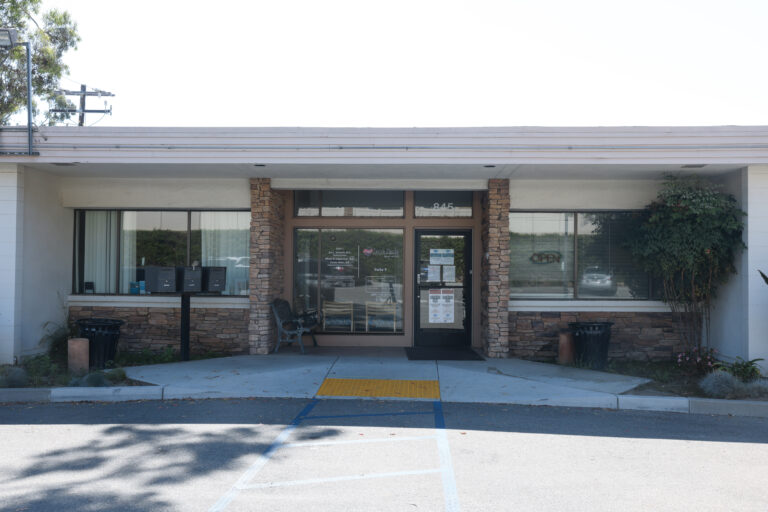
Orange, lemon, and avocado groves blanket the valley, a narrow ribbon of flat land that slices between shrub-studded mountains. Drive along the country roads early in the morning, and you’ll see laborers perched on ladders amid the tree branches or bent over plucking greens from the earth, a rough mountain face rising behind them.
In Santa Paula, which calls itself the “Citrus Capital of the World,” tight neighborhoods of modest ranch homes are dotted with Mexican markets and bakeries. Murals along the town’s quaint Main Street depict workers picking and packing lemons and oranges and returning home from the orchards for a family meal.
The team of about a half-dozen family physicians and obstetricians who serve the county clinics in Santa Paula and Fillmore are a rare breed in modern American medicine: practitioners who see multiple generations of patients through every life stage, providing their prenatal care, delivering their babies, and caring for both mothers and children after birth.
The doctor Hernandez has worked with the longest is Lisa Solinas, who has been here for almost 30 years and trained three of the other doctors on the team — including her own daughter, Ana Levin.
“We joke that we do boutique OB care for the safety net,” Levin said.
On a lunch break on a June afternoon, Levin and Solinas sit at a picnic table on a hill above the valley. They both have attentive, caring faces, with long brown hair pulled back. Both were born in the U.S. but became fluent Spanish speakers. Solinas raised Levin in Ojai, a more affluent town over the mountains, and Levin now commutes here from Los Angeles because she loves the work and the community. This afternoon, Levin’s patient in labor is a 16-year-old who was herself delivered as a baby by Solinas.
Levin estimates that 80%-90% of her patients have postpartum depression, anxiety, or milder baby blues — and more than 50% are hurting enough that they ask her for help. By comparison, in the U.S. the Centers for Disease Control and Prevention puts the rate of postpartum depressive symptoms at about 13%.
A meta-analysis published in Nature found that 17% of mothers around the globe experience postpartum depression. But that number ran higher in areas with low income, low education, and low social support — suggesting that stressful life conditions put women at higher risk.
“It’s when moms have no support that they’re more likely to have postpartum depression,” said Jennifer Payne, professor and vice chair of research in the department of psychiatry and neurobehavioral sciences at University of Virginia School of Medicine, who specializes in perinatal mood disorders. Postpartum depression can have genetic and biochemical roots, but the conditions of mothers’ lives also play a powerful role.
That tracks with Levin’s guess as to why her patients seem to experience perinatal mental illness at unusually high rates. Many are up against the hardships of poverty, language barriers, and uncertain immigration status — all of which makes them more isolated in the critical postpartum period.
One patient of Levin’s felt especially sad raising her baby after both her parents were deported. Another had to use all her disability leave for severe morning sickness, and then return to work as a waitress when her baby was only 4 weeks old.
“Now it just seems like one of the experiences of having a baby is that you’ll experience postpartum depression or anxiety or both.”
Ana Levin, family medicine specialist
The pandemic made the strain more acute as families lost jobs, had trouble paying bills, and stayed away from friends and relatives amid fear of contagion. It’s also possible, Levin noted, that she and her colleagues diagnose patients with postpartum depression more frequently because their patients know and trust them well enough to tell them about it.
But postpartum depression, while quite serious, is often an afterthought in maternal health care systems. “Postpartum depression is the most common complication of having a baby,” said Payne. Despite that, “We screen less than 50% of people for it, and we don’t treat the ones we screen who screen positive.”
This neglect is particularly pronounced for immigrants, said Sergio Aguilar-Gaxiola, professor of internal medicine at University of California, Davis, and founding director of the university’s Center for Reducing Health Disparities.
“We have documented for decades that immigrant populations don’t have the same access to care, and in a timely manner, as the rest of the population,” he said. Even where there are therapists available to serve immigrant communities, it’s often hard for immigrants to access mental health care because of language barriers, cultural differences, and life obstacles like working multiple jobs.
“Now it just seems like one of the experiences of having a baby is that you’ll experience postpartum depression or anxiety or both,” said Levin. “And that’s not built in as part of what postpartum or peripartum care requires.”
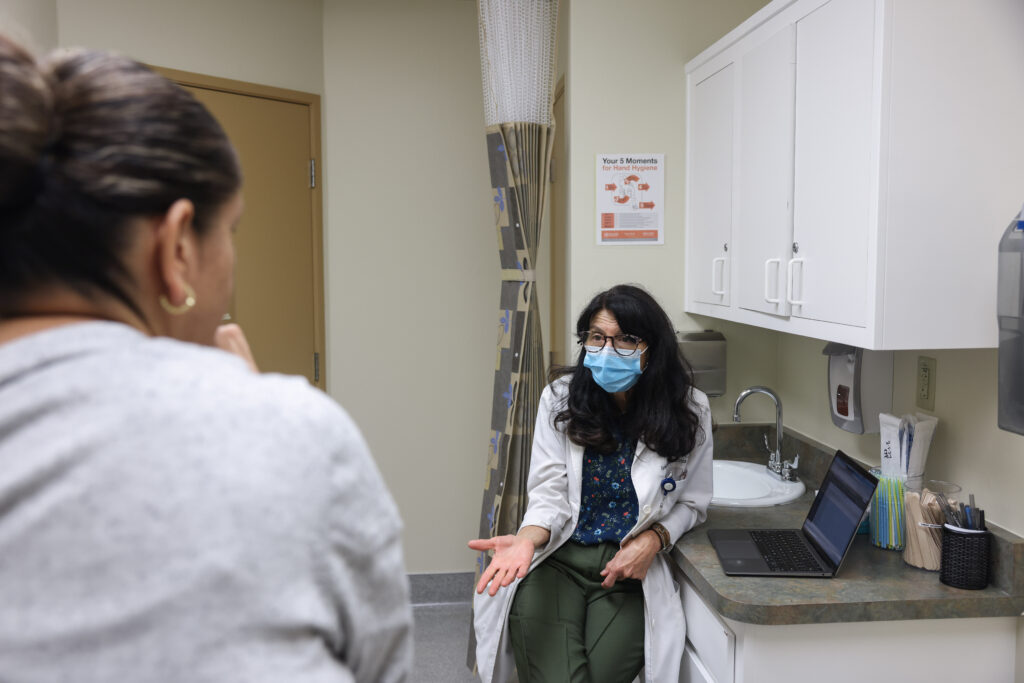
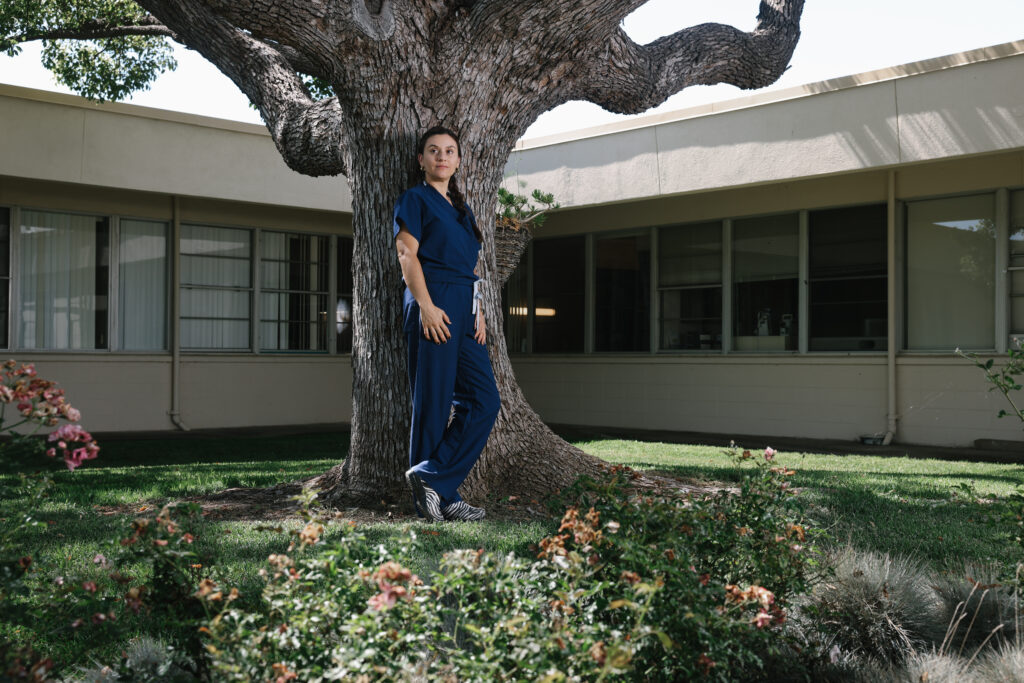
Left untreated, the consequences of postpartum mental health issues can be profound. Payne points out that untreated mental health problems during and after pregnancy are associated with higher risk of adverse outcomes for the fetus or infant, from premature birth to lower birth weight to poor emotional development. For mothers, the CDC reports that mental health conditions are the leading cause of pregnancy-related death (including deaths from suicide and overdose) for women up to a year after giving birth.
California is one of a handful of states that requires hospitals and clinics to screen new mothers for postpartum depression. But at the Ventura County clinics, doctors have limited ways to help patients who screen positive.
For uninsured mothers or those with Medi-Cal (California’s version of Medicaid), doctors can make a referral to one of the therapists in the county clinics. As demand for mental health care surged in recent years, the county increased the number of on-site therapists in Santa Paula and Fillmore from one to four. Three of these therapists speak Spanish. Yet even with that expansion, the waiting list to see an on-site therapist is often three months long.
“There’s such a small window [for treatment] with pregnancy,” said Levin. “When you need the services, you really need them, and you need them now.”
The chasm between supply and demand for mental health care is hardly unique to Ventura County. Since mental health symptoms soared across the country during the pandemic, therapists and medical providers have struggled to keep up. At the University of Virginia outpatient psychiatry clinic where Payne supervises residents, she said there’s a three-month wait list, too.
For patients with private insurance in Ventura County, mothers themselves are charged with taking the initiative, even while in depression’s grip, to find a therapist who accepts their insurance and call for an appointment — upon which they often discover that the therapy practice is full.
That was the route Rosemary Hernandez had to take.
“I was mourning the person that I used to be,” she said of her depression. “Before, I was Rose. I felt like now I’m just mom.”
Hernandez, now 31, had worked since age 16 without ever taking a vacation longer than a week. Without work’s routine and purpose, she said she started to wonder, “What’s the point of me being here anymore? I didn’t feel like an asset anymore. Even though I knew my baby needed me, in my head she would be better off with my family or with her dad.”
When she did find a therapist with time to see her, her sessions lasted only a month or two before her insurance changed due to maternity leave. What did help her, at last, was the antidepressant medication her doctor prescribed. “Once I started medication, I started seeing the light at the end of the tunnel,” she said. “Because for so long, I felt like there was no light there.”
“Once I started medication, I started seeing the light at the end of the tunnel. Because for so long, I felt like there was no light there.”
Rosemary Hernandez, medical assistant
Returning to work when her daughter was 9 months old helped, too. Hernandez still takes her antidepressants and intends to continue. “I see the good things in life now,” she said. “I enjoy my daughter. I’m not the zombie that I was before.”
Medication can be a huge help, but Payne said many doctors are reluctant to prescribe it during pregnancy or lactation due to concerns that it could harm a fetus or newborn. What they don’t realize, she added, is that there’s far more evidence that leaving mental illness untreated can harm a mother and child “compared to little or no identified risk with exposure to antidepressants.”
Even when a doctor offers medication, both health care workers and patients themselves say that many mothers are reluctant to take it. They worry that it could affect their babies through pregnancy or breastfeeding. They’re afraid of being seen as “crazy.” The frequent saying in Mexican Spanish “Échale ganas,” which means roughly “Give it your all,” resounds in their minds. They don’t want to depend on anything to get by.
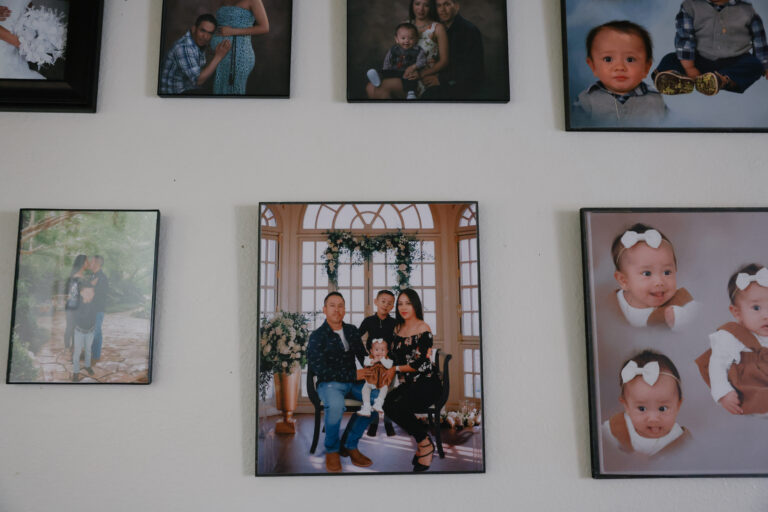
Medication is only part of the care for patients with postpartum depression. For those stuck on the waiting list for a therapist, Levin and her fellow doctors finally have a way to get them immediate support.
That comes courtesy of Adriana Hernandez (no relation to Rosemary), a labor and delivery nurse at the local hospital who recently completed her certification as a psychiatric nurse practitioner.
Adriana, who was born in Mexico but grew up in this valley, started a free postpartum support group via Zoom last year. Two mornings a week, she hosts two hourlong sessions, one in English and one in Spanish. There is no waiting list. Levin and her colleagues have begun referring struggling patients there.
Most of the support group sessions go completely unattended. But Adriana faithfully shows up, tuning into the empty Zoom room from her computer or cellphone, wherever she is. Then — and this is the most crucial part — when the mothers who have been referred to her support group don’t attend, she calls them.
“Just calling in for a well check,” she tells them. “How are you doing? How are you adjusting? Do you have any questions?”
When she detects signs of depression or anxiety, she reassures them that these feelings are normal. She researches their questions, sends pamphlets and informational videos, and asks which friends or family members might be able to lend them support. Before hanging up, she said, “I’ll tell them, ‘Hey, can I call you for the next three weeks, 10 minutes once a week, just to check in with you?’”
The support group happens on Adriana’s paid work time. But the phone calls are completely voluntary.
For Anayeli Valdovinos, a patient of Levin’s, the connection with Adriana has made a difference.
Valdovinos lives in a small, tidy apartment off the main highway in Fillmore with her husband, who works as an avocado picker, along with their two children and her parents. Family photos hang on the living room wall, and a sign on the front door reads, in Spanish, “This is a Catholic home.”
After her daughter’s birth last year, Valdovinos became gripped with a panic so constant and severe that she barely left her bedroom. Her grandmother and a close friend, a young mother of three, had both died around the time of Valdovinos’ delivery, and she felt terrified that an illness or accident would take her from her new baby.
When she finally confessed how she was feeling to others, she discovered that a cousin and a friend of hers both had experienced postpartum depression, but neither had ever spoken about it.
Speaking in Spanish, Valdovinos said, “You don’t know until you’re going through it and you tell someone that you’re not the only one.” Then the stories come: “Me too, and me too, and me too.”
Valdovinos said that Adriana encouraged her to go out for walks, to see friends, to escape from the four walls of her home, “because in a way these four walls will kill you, little by little.” Between that and the medication she finally decided to take when her daughter was 9 months old, Valdovinos is getting better. Sometimes fearful thoughts still strike, but she tries not to fall into them. She can imagine now having another baby.
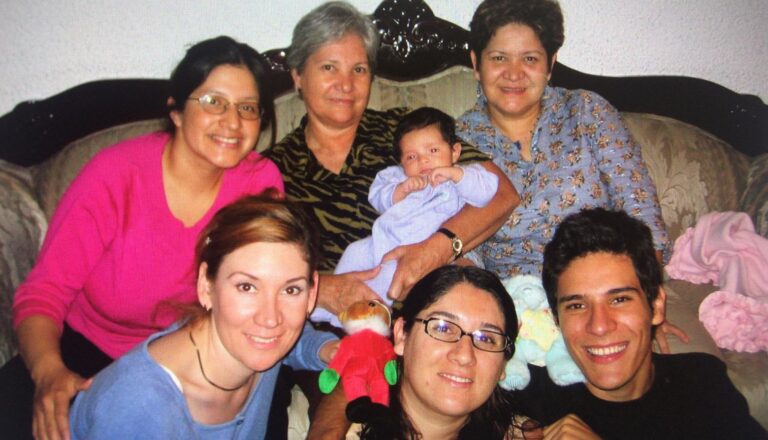
For now, Levin’s patients with postpartum mental health problems still have a limited array of options: an overstretched therapy staff, a volunteer phone counselor, or the labyrinth of commercial insurance and private therapy practices. Levin hates asking patients the required questions about mental health when she doesn’t have reliable means to help with the answer. She needs a new system.
“The suffering of people with uteruses has been considered a normal part of populating this planet,” she said. “If you’re suffering, it’s either for lack of mental fortitude or ‘this too shall pass.’”
Her mother, Solinas, tries to help by putting public disability payments to work for pregnant and postpartum mothers. Even undocumented immigrants in the U.S. often pay into Social Security through their paychecks, and as such have access to public disability benefits. California requires most employers to grant mothers 12 weeks of leave after delivery (a mandate that some employers of immigrant laborers ignore) and provide 14 to 16 weeks of partial wage replacement. But the state offers up to 52 weeks of financial support for a disability. So Solinas notes the symptoms of childbirth recovery, such as back pain or pelvic pain, and signs the form to grant mothers more paid time off.
“The suffering of people with uteruses has been considered a normal part of populating this planet. If you’re suffering, it’s either for lack of mental fortitude or ‘this too shall pass.’”
Ana Levin, family medicine specialist
“I support people staying home with their little ones,” said Solinas, sitting at the picnic table with Levin on their lunch break.
“And I feel like your model has taught us that there is a way, even in our system, to make that possible for patients,” Levin added. “And for the sake of people’s mental health, it really isn’t our job to police their disability. Our job is to keep people well.”
“Right,” said Solinas. “And we’re talking about both mom and baby, because we want moms to be well, and we want their babies to get the best possible [care].”
A more complete, more sustainable solution would necessitate a fundamental change in the U.S. health care system, Levin believes. Postpartum depression “really doesn’t miss any socioeconomic group,” she said. “And it requires so many different types of support people. So it does have to be part of some integrated, whole health care system. If that’s not the direction that medicine is heading, it’s just going to be really hard to tackle problems like these.”
Aguilar-Gaxiola, the UC Davis mental health expert, said that effective care for parents (including fathers) with depression must integrate routine screening, prevention, and treatment. For immigrants, it’s especially important that treatment confers a sense of belonging and connection. Treatment should take place in a parent’s native language, with a care provider who understands the patient’s culture, and in a comfortable setting, such as a school or community center, rather than in an unfamiliar clinic. And given the complexity of each family ecosystem, care should involve multidisciplinary professionals, such as nurses and social workers, and attend to multiple members and generations of the family.
“We cannot see depression as an individual condition,” Aguilar-Gaxiola said. “If we continue to just focus on the mother, we are missing the boat on how depression impacts the whole family unit.”
In Santa Paula, Adriana Hernandez sees her fledgling support group as only the beginning of a broader set of services that she hopes to build. She envisions transitioning the group to in-person meetings, offering lactation consults to bring mothers in, integrating the wisdom of older community members, and involving peer leaders. (Valdovinos is interested in becoming one.)
Her even bigger dream is to open a wellness center, staffed by Hispanic caregivers who understand their clients’ culture and can support them through life stages ranging from pregnancy to menopause to grief and loss, offering everything from support groups to therapy to meditation to massage. She imagines the center functioning like the private, integrative wellness centers that more affluent mothers can afford. But more fundamentally, her vision is inspired by the support that she herself received when she had postpartum depression as a new mother 18 years ago.
What ultimately protected her, Adriana recalled, was a monthlong visit to family in Mexico when her daughter was 1 month old.
“And what did I receive?” Adriana said. “I slept. I got fed. They washed my clothes, my baby’s clothes. I had six aunts. And guess what, everybody wanted to feed my daughter, and everybody wanted to bathe her, so I was feeling fully supported. So that’s my ambition. We all need that.”
This story is the third in a series on the U.S. mental health system, supported by a grant from the NIHCM Foundation. Our financial supporters are not involved in any decisions about our journalism.
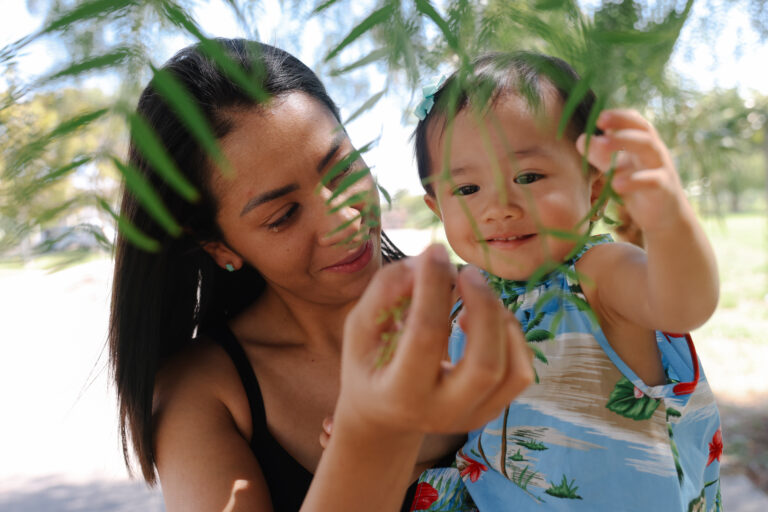




Exciting news! STAT has moved its comment section to our subscriber-only app, STAT+ Connect. Subscribe to STAT+ today to join the conversation or join us on Twitter, Facebook, LinkedIn, and Threads. Let's stay connected!
To submit a correction request, please visit our Contact Us page.